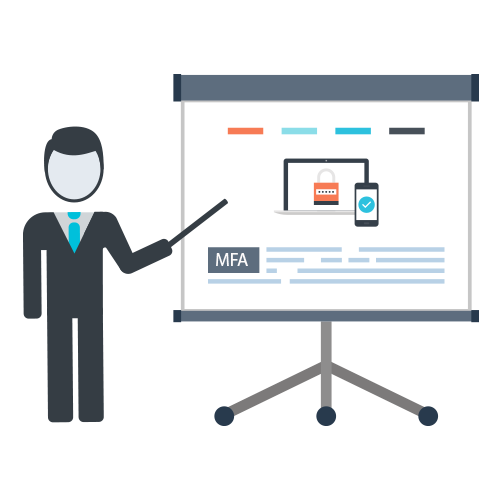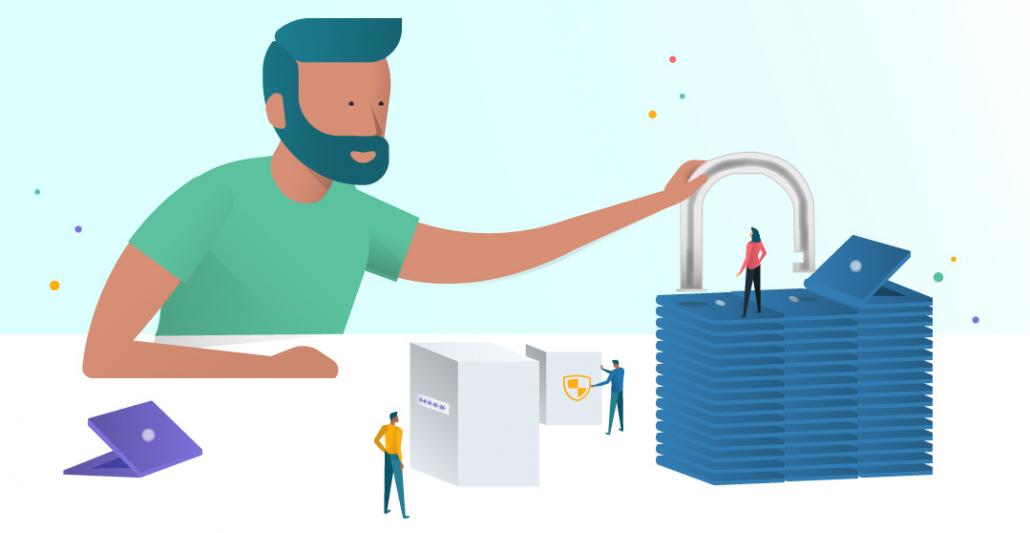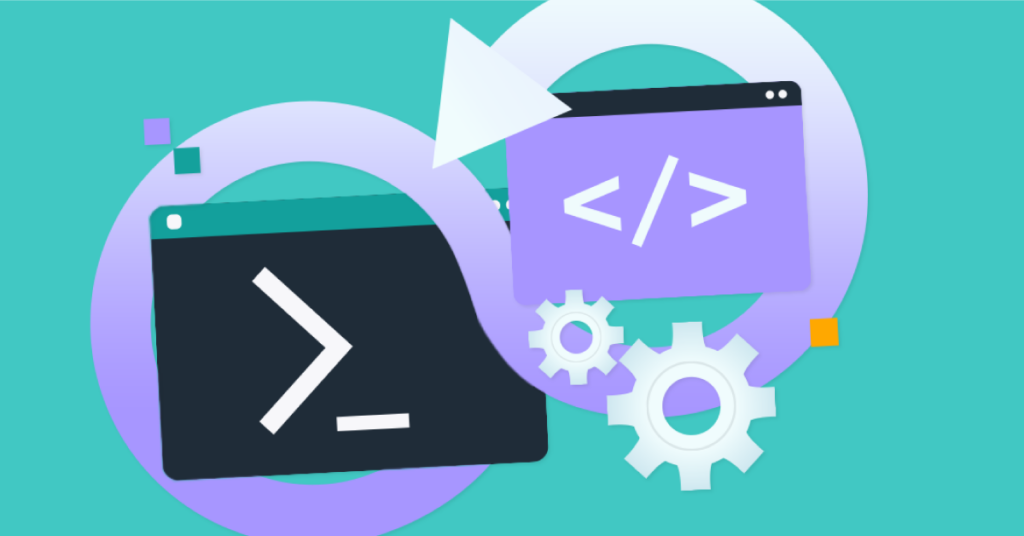Workplaces weren’t the only entities that endured sweeping changes as a result of the shift to remote work; IT departments too are now dealing with their own version of a “new normal.” Amidst determining how to shift their infrastructure to support remote work quickly in a matter of days (which was no small feat), IT teams also had to quickly learn how to complete in-person jobs remotely.
This quick change significantly stressed IT teams: in early 2021, about 66% of IT professionals reported feeling overwhelmed by work in a JumpCloud survey. That number decreased to 55% as they became accustomed to their environment changes toward the end of the year — but that’s still more than half of IT teams feeling overwhelmed by their responsibilities.
What’s more, remote work also presented end users with new challenges — many of them tech-related. This drove up the number and complexity of help desk requests. IT service teams are now working with more frequent and complex requests.
While a perfect world might assign higher headcounts to these strained IT teams, many organizations’ priorities and budgets prohibit new hires. This leaves IT teams strained by incoming requests and a limited capacity to troubleshoot and fix them.
In these environments, IT teams need to focus on improving their efficiency. The following tools and practices help improve IT team efficiency, both by streamlining request processing and reducing request frequency altogether.
1. Prioritization and Project Management

First, IT teams need to make sure they’re working as a well-oiled machine. A few practices can reduce inefficiencies and improve the IT service department’s overall performance.
- Clarify request priority. Get everyone on the same page about which types of requests receive high and low priority. Priorities should come from the top: align the team on overarching business objectives to help them assess task importance.
- Invest in a project management tool. Choose one that enhances your team’s workflows rather than hinders it.
- Clarify team members’ roles and specialties. Understanding who specializes in which areas can streamline task assignment.
- Establish escalation paths. Make sure team members know where to send different types of complex requests.
- Keep workflows clear and consistent. Every team member should understand and follow the prescribed workflow.
- Request and consider team feedback. Hearing from the team members working within these workflows day in and day out will help you pinpoint what works and improve what doesn’t.
- Train frequently. Keep employees up to date on both internal practices and industry developments.
2. Employee Self-Service

To help employees address more issues without involving IT, develop self-service documentation for common problems they can use to troubleshoot on their own. Popular self-service implementations include documentation for:
- Configuring machines for remote setup.
- Installing and configuring new apps.
- Troubleshooting and fixing common problems.
- Frequently asked questions to the IT and security team and their answers.
If your team shies away from creating written documents, try these other types of self-service resources:
- Videos. For example, record an IT team member explaining how to configure a new app.
- Screen recordings. For example, record the steps to change your password in a commonly used app.
- Screenshots and images. For example, circling the “settings” button on an app’s user dashboard may be enough to reduce requests around configurations within the app.
3. Training

Tool training can zap many IT issues before they arise. Rather than allowing your IT team to fall into a purely reactionary approach, helping employees use tools correctly from the outset can prevent many issues altogether. Include tool training in employee onboarding, and whenever you bring a new tool into the organization, make tool training mandatory for those who will use it.
There are ways for IT teams to administer training without taking the time to conduct live in-person sessions. Some time-saving training techniques include:
- Use the vendor’s resources. Vendors often have user training resources available — if they do, distribute them to your users to equip them to avoid and troubleshoot problems.
- Creating training documentation. If vendors don’t provide training resources, consider creating your own and distributing it to employees.
- When creating documentation, work with your IT team to identify the most common issues and develop a cheat sheet to help users avoid or address those issues themselves. This reduces the burden on you and your team to create training for the entire product while still tackling the majority of issues a tool creates.
- Record a reusable training video. For more personal training sessions, IT teams can record a training session, either by recording a video on their own time or recording one training session to be used for future training. This reduces the amount of time IT has to spend in live training without removing the face-to-face feel of training.
4. Reduce Password Lockouts

Password lockouts are common help desk requests. In fact, a recent study found that over 50% of employees had needed a password reset at work within the last 90 days. While these requests may not be complex, their frequency alone can overwhelm IT teams.
Passwords are notoriously difficult to remember and track, and even long and complex passwords are subject to compromise. To combat this, companies are reducing their use and reliance on the password in favor of more secure options.
Chief of these options include multi-factor authentication (MFA), single sign-on (SSO), and passwordless logins. Not only are these options more secure, but they are also more intuitive and user-friendly, which reduces the number of issues that they cause — and, consequently, the number of help desk tickets they generate.
Let’s explore each of these password-reducing options.
Multi-Factor Authentication
MFA still uses the password, but it reduces the organization’s reliance on it as the key authentication method. Instead, it distributes the onus of authentication to more than one method, with the password being only one of at least two factors.
The second factor is usually more secure than a password, requiring the person logging in to have timely access to something like the user’s smartphone, email account, security fob, or fingerprint — all of which are hard to fake or get ahold of. The combination of a password with a secure second factor dramatically increases security.
In addition to heightening security, MFA provides an avenue for password resets without involving IT. If the tool and organizational policies allow it, the second factor can be used to authenticate the user’s request to reset their password, bypassing the IT help desk request.
Single Sign-On
SSO reduces the frequency that users need to input their password. Instead of requiring them to log into each application separately (for most employees, this adds up to more than 190 passwords) and only requires them to use one set of credentials to log into all the apps they need to complete their work. This set of credentials is often backed with MFA for security.
While one password instead of many may sound less secure, this isn’t the case. SSO doesn’t just remove the password requirement; instead, it replaces the password with secure authentication protocols like SAML and SCIM. These keep the environment secure without requiring an employee to remember hundreds of passwords.
Passwordless Authentication
Another option is to remove the password altogether. Similar to SSO’s replacement of the password with secure protocols, passwordless authentication replaces the password with FIDO2 passwordless protocols like WebAuthn. Passwordless logins are like MFA logins where neither factor is a password; it might instead be a combination of security key and MFA push notification, for example.
5. Integration and Automation

The growing amount of work on IT teams’ plate precludes the possibility of doing everything manually. In fact, the majority of IT tasks should not be manual: JumpCloud’s IT team strives for a distribution of 90% integration, 9% automation, and 1% manual work.
Integration and automation are key to eliminating manual work.
Integration
Integrations should be at the heart of a modern IT infrastructure. As businesses take on more software-as-a-service (SaaS) and cloud-based tools, they need to make sure they work with one another and with the core infrastructure to ensure seamless usability.
Security Assertion Markup Language (SAML) and System for Cross-Domain Identity Management (SCIM), for example, are critical protocols for powering integrated authentication in a distributed infrastructure.
SAML
SAML is a protocol that facilitates authentication and authorization between an identity provider (IdP) and a service provider. When working with a directory, SAML allows the directory to authenticate and authorize users to access many of their applications.
SCIM
SCIM is a protocol that allows for identity management in cloud-based applications. It also enables user provisioning, which can help automate onboarding.
Automation
Automation further reduces the manual labor required of IT teams. Some of the areas where automation can make the biggest impact on IT teams’ efficiency include:
Onboarding
Manual onboarding is not scalable, and it becomes overwhelming quickly. We estimate the average manual onboarding to take about an hour — so onboarding a team of 10 would take more than a full workday. This challenge compounds when teams are remote: organizations have to add multiple device shipping routes to the onboarding process, and IT admins need to store them while they work on them. This process is especially not scalable — onboarding a team of 10 would require an IT admin to be personally responsible for over ten thousand dollars’ worth in new laptops.
Zero-Touch Enrollment saves time and eliminates the laptop shipping and storage problem with remote, automated onboarding. IT admins can configure laptops without ever touching them, and the end user can receive the laptop directly from the manufacturer configured and ready to go.
Just-in-Time (JIT) provisioning combines with Zero-Touch Enrollment to create an almost fully automated onboarding process. JIT provisioning automatically creates a new account for users the first time they access a service, removing the need for IT to do so manually.
Offboarding
While provisioning accounts can take time, deprovisioning takes even longer, and it tends to be a more complex process. With deprovisioning, admins need to be thorough and are sometimes working within a tight turnaround time. Automatic deprovisioning significantly streamlines the process and removes the risk of forgetting to deprovision accounts.
Chatbots
Automatic responses and chatbots can help automate the IT troubleshooting process. Instead of involving IT personnel in every help desk request, chatbots can help with simple fixes and direct only the more complex tasks to real people. Slack, for example, integrates with chatbot and auto-response apps.
6. Prioritize the Employee Experience

Choose the Right Tools
Tools that aren’t user-friendly hinder productivity and create frequent problems for IT to fix. On the other hand, user-friendly tools both reduce the number of problems users encounter and often make problems easier for IT to fix — that makes fewer tickets and less time per ticket.
Choose tools that prioritize the user and the admin experience to capitalize on these benefits. Common signals of user-friendly and admin-friendly tools include:
- Robust compatibility with different apps and operating systems.
- Detailed telemetry.
- Customizability.
- Clear licensing and pricing policies.
- Cloud-first design.
Robust Identity Management
Enabling all the integrations, automations, and access required in a modern environment requires strong and robust identity management. The lack of a single source of identity creates significant security and operational problems that create hours of headaches for your IT team. Often, the inability to maintain a single source of identity comes from:
- Not using a directory.
- A directory that isn’t robust enough to support all the resources your staff need, forcing them to use different identity management tools with those resources.
- Shadow IT due to tools that aren’t user friendly or don’t support the users’ objectives.
Enable Seamless Access
Now that many teams are working remote or in hybrid-remote environments, resource access can become a problem. Employees should be able to seamlessly access the resources they need to work from any location and device. One of the best ways to accomplish this is with a cloud directory.
Cloud directories are designed to connect users to the resources they need in modern, remote environments. JumpCloud®, for example, uses SAML, SCIM, LDAP, RADIUS, and other protocols to support file servers, web applications, networks, and more — virtually all the resources you need to Make Work Happen®.
7. Start with a Baseline Survey

To best optimize your IT team to handle inbound requests, it helps to first understand how your employees feel about and interact with their technology. One of the best ways to support your IT team is with a tool that can take on a significant portion of their workload. JumpCloud® is a cloud directory platform that was designed to do just that: it provides integrations, automations, authentication tools, centralized management, and a positive employee experience that help unburden IT teams. Learn more about how JumpCloud works by scheduling a demo.
Source:www.jumpcloud.com







